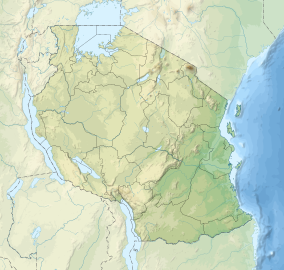Serengeti National Park
| Serengeti National Park | |
|---|---|
|
IUCN category II (national park)
|
|

Landscape in Serengeti National Park
|
|
| Location | Tanzania |
| Coordinates | 2°20′S 34°34′E / 2.333°S 34.567°ECoordinates: 2°20′S 34°34′E / 2.333°S 34.567°E |
| Area | 14,750 km2 (5,700 sq mi) |
| Established | 1951 |
| Visitors | 350,000 per year |
| Governing body | Tanzania National Parks Authority |
| Type | Natural |
| Criteria | vii, x |
| Designated | 1981 (5th session) |
| Reference no. | 156 |
| State Party | Tanzania |
| Region | Africa |
The Serengeti National Park is a Tanzanian national park in the Serengeti ecosystem in the Mara and Simiyu regions. It is famous for its annual migration of over 1.5 million white-bearded (or brindled) wildebeest and 250,000 zebra and for its numerous Nile crocodile and honey badger.
The Maasai people had been grazing their livestock in the open plains of eastern Mara Region, which they named "endless plains", for around 200 years when the first European explorer, Austrian Oscar Baumann, visited the area in 1892. The name "Serengeti" is an approximation of the word used by the Maasai to describe the area, siringet, which means "the place where the land runs on forever".
The first American to enter the Serengeti, Stewart Edward White, recorded his explorations in the northern Serengeti in 1913. He returned to the Serengeti in the 1920s and camped in the area around Seronera for three months. During this time, he and his companions shot 50 lions.
Because the hunting of lions made them scarce, the British colonial administration made a partial game reserve of 800 acres (3.2 km2) in the area in 1921 and a full one in 1929. These actions were the basis for Serengeti National Park, which was established in 1951.
The Serengeti gained more fame after the initial work of Bernhard Grzimek and his son Michael in the 1950s. Together, they produced the book and film Serengeti Shall Not Die, widely recognized as one of the most important early pieces of nature conservation documentary.
To preserve wildlife, the British evicted the resident Maasai from the park in 1959 and moved them to the Ngorongoro Conservation Area. There is still considerable controversy surrounding this move, with claims made of coercion and deceit on the part of the colonial authorities.
...
Wikipedia

